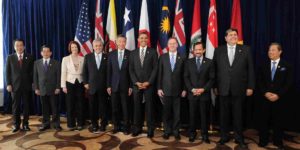Tariff and Non Tariff Barriers
Tariff and Non-Tariff Barriers are restrictions imposed on movement of goods between countries. It can be levied on imports and exports. Tariff and non tariff barriers are imposed for various reasons such as –
(i) National Security – Countries enforce tariff and non-tariff barriers to protect the security of the nation. Eg. Defence sector in India
(ii) Retaliation – Government of a country intervenes in the trade policies in order to act as a bargaining tool. Retaliation agreements help countries to allow free trade among them.
(iii) Protecting Jobs – Government aims to protect domestic employment. Domestic employment is affected from foreign competition as domestic industries start to import services from abroad in order to keep up with the competition.
(iv) Protecting Infant industries – Competition form imported goods threatens the infant industries of a country. In order to develop and grow certain industries government may impose heavy tariffs on imported goods to increase prices and help the infant industries.
(v) Protecting customers – Government may levy a heavy tax on goods which are against the welfare of the country and its citizens.
Tariff Barriers
Tariff is a custom, duty or a tax imposed on products that move across borders. The words tariff/custom/duty are interchangeable. It is the most common instrument used for controlling imports and exports.
♦ Import tariff/duty – It is the custom duty imposed by the importing country i.e. the tax imposed on goods imported. It is levied to raise revenue and protect domestic industries.
♦ Export tariff – It is the duty imposed on goods by the exporting country on its exports. Generally certain mineral and agricultural products are taxed.
♦ Transit duties – It is levied on commodities that originate in one country, cross another and are consigned to another. Transit duties are levied by the country through which the goods pass. It results in increased cost of products and reduction in amount of commodities traded.
Other Tariff barriers
♦ Specific duty – It is based on (specific attribute) physical characteristics of goods. It is a fixed or specific amount of money that is levied as tax keeping in view the weight(quantity)/measurement (volume) of the commodity.
♦ Ad valorem duty – These are duties that are imposed according to the value of commodities traded between countries. It is generally a fixed percentage of the invoice value of the goods traded.
♦ Compound duty – It is a combination of specific duty and ad valorem duty on a single product. It is partly based on quantity and partly on the value of goods.
Non Tariff Barriers
These are non tax restrictions such as (a) government regulation and policies (b) government procedures which effect the overseas trade. It can be in form of quotas, subsidies, embargo etc.
♦ Quotas – It is a numerical limit on the quantity of goods that can be imported or exported during a specified time period. The quantity may be stated in the license of the firm. If the importer imports more than specified amount, he has to pay a penalty or fine.
♦ VER (voluntary export restraint) – It is a quota on exports fixed by the exporting country on the request of the importing country. The exporting country fixes a quota regarding the maximum amount of quantity that will be exported to the concerned nation.
♦ Subsidies – It is the payment made by the government to the domestic producer so that they can compete against foreign goods. It can be a cash grant, subsidized input prices, tax holiday, government equity participation etc. It helps a local firm to reduce costs and gain control over the market.
Other barriers
♦ Administration dealings – These are regulatory controls and bureaucratic rules and regulations which affect the flow of imports. It can be a delay at custom offices, safety inspection, environment regulatory inspection etc.
♦ Local content requirement – Legal content requirement is a legal regulation which states that a specified amount of commodity must be supplied in the domestic market by the producer. It is used to help local labour and domestic suppliers of goods. Government may state a – (a) labour requirement (b) input requirement or (c) component required at a local level.
♦ Currency Control – Government may impose restrictions on currency convertibility. In order to import goods countries have to make payment in foreign currency which is acceptable worldwide i.e. US dollar, European Euro or Japanese Yen. The government can put a limit on the amount of money that can be converted in foreign currency or ask a company to apply for a license to obtain such currency.
♦ Embargo – It means a complete ban on certain commodities. A country may ban import and export of certain goods in order to achieve some political or religious goals.
♦ Product testing and standardization – Standards are set for health, welfare, safety, quality, size and measurements which have to be complied with in order to enter a foreign market. The products have to meet international quality standards. All Products must meet the quality standards of the domestic county before they are offered for trade. Inspection is very extensive in case of electronic goods, vehicles and machinery.

it a nice presentation.
it is a good summarised understandable work
Good content.
Well written
How subsidy a non tariff barrier?